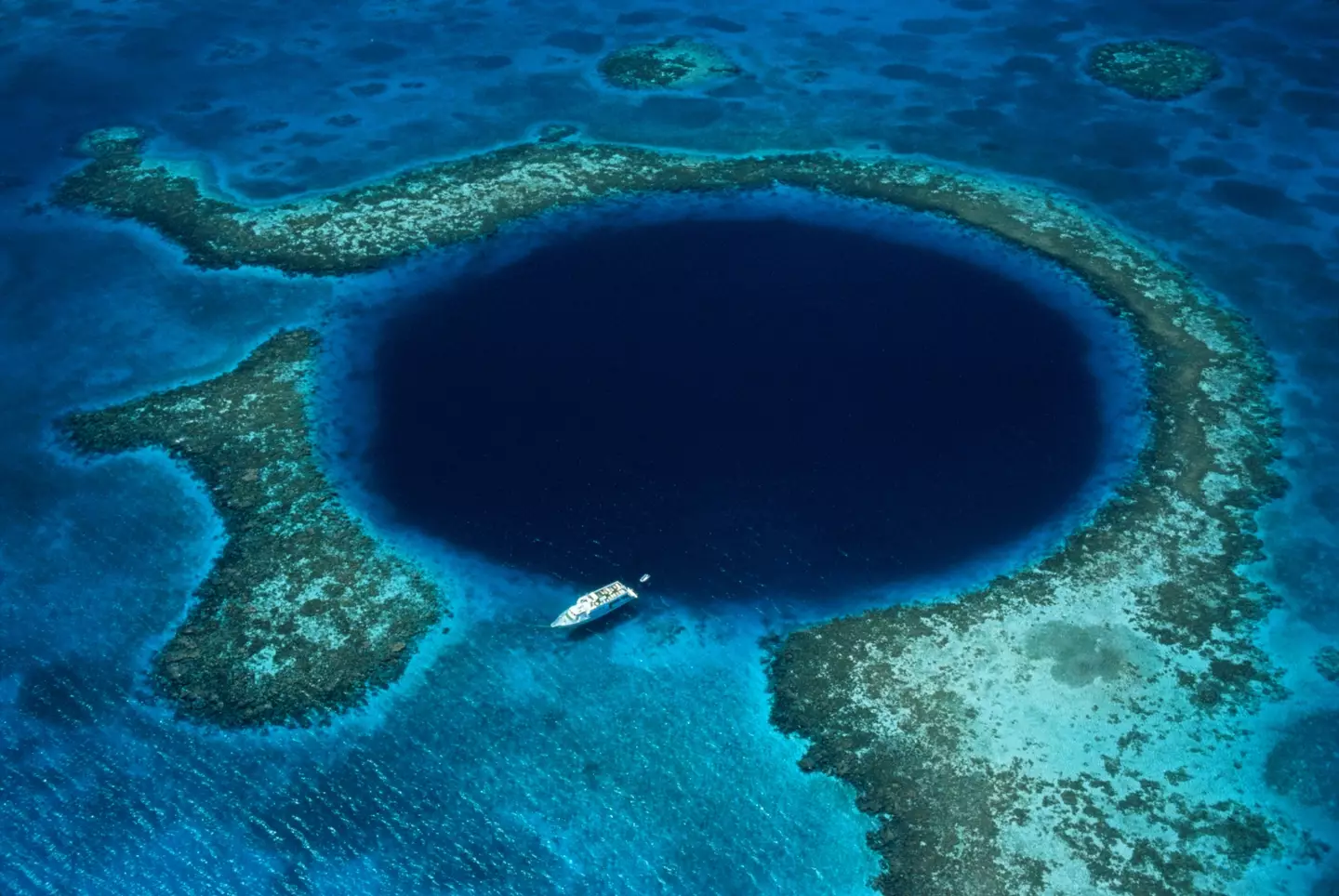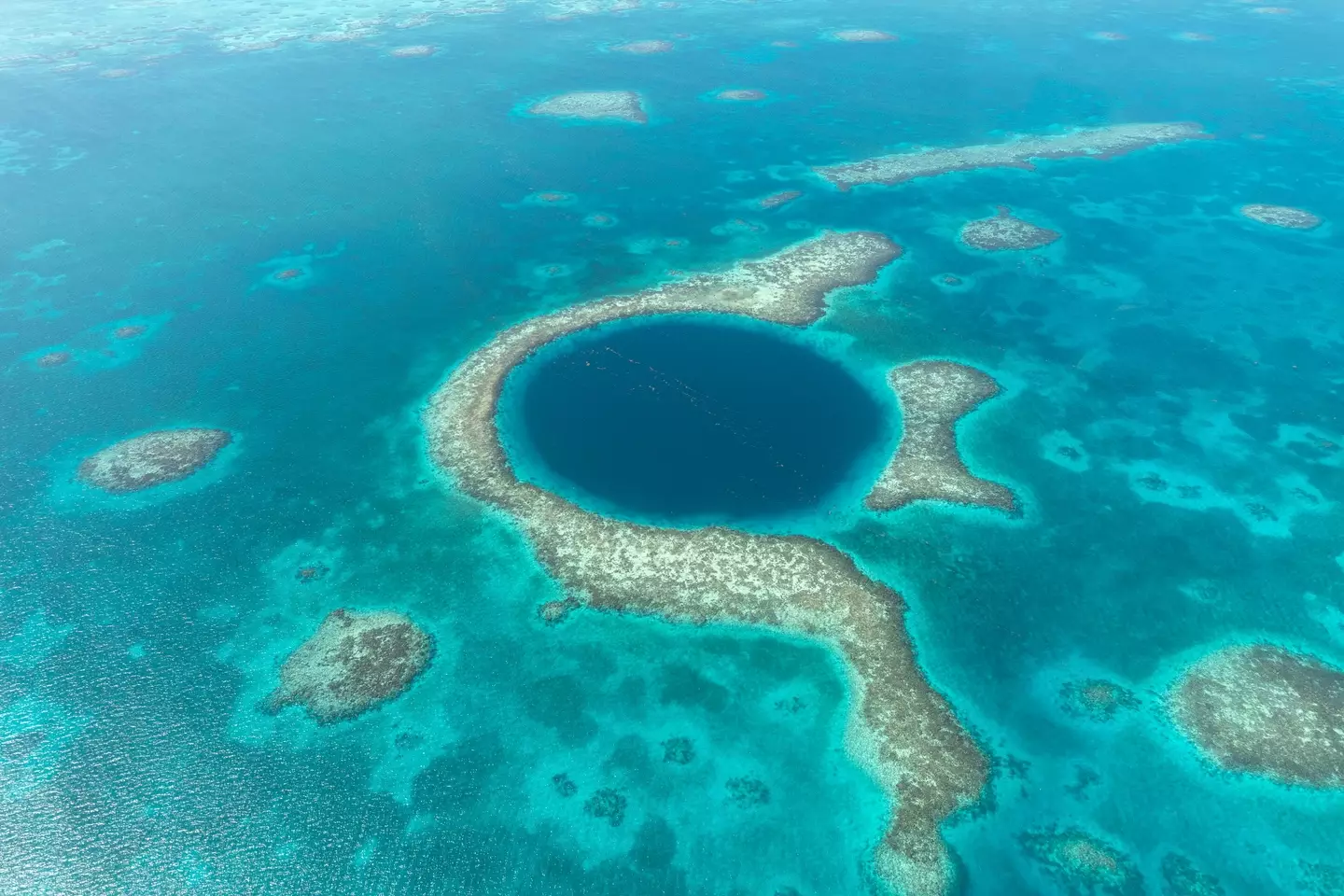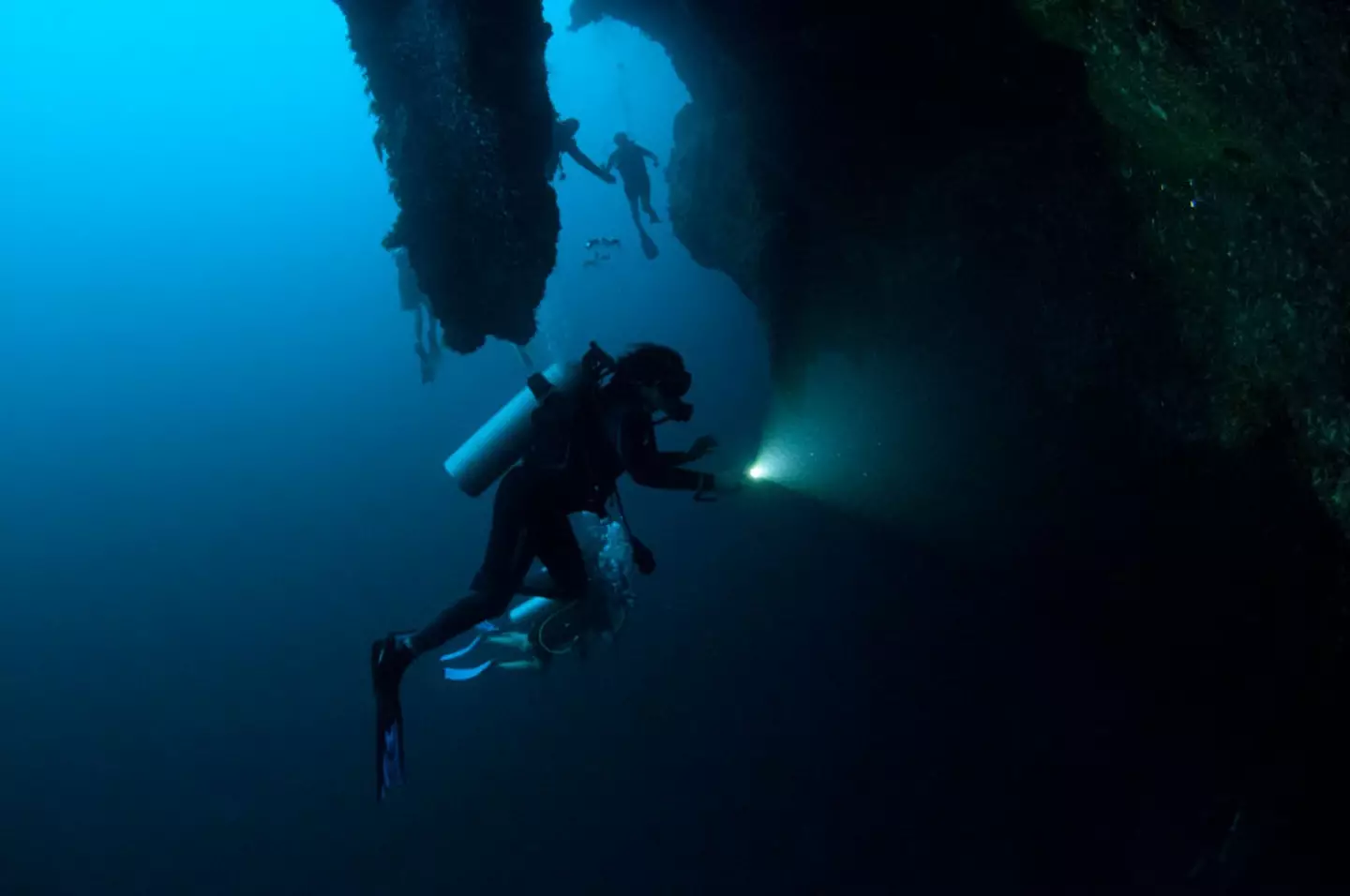
If you're already scared of the ocean, then we apologise in advance.
Because divers have made a rather disturbing discovery while investigating the Great Blue Hole, off the coast of Belize.
The huge hole is located approximately 60 miles off the coast of Belize, and descends more than 400 feet into the ocean.
Which sounds pretty terrifying.
Advert
For so many years, divers were unable to explore too much of the hole as they didn't have the proper equipment to tackle its depths.
But that changed with the advancement of technology - and when the hole caught the interest of billionaire Richard Branson.

The Virgin founder embarked on an expedition to the hole when diver Fabien Cousteau travelled there to capture high-quality photos and videos of the mysteries hidden beneath the surface.
But what lay at the bottom of the hole is quite shocking.
Advert
Lying at the bottom of the Great Blue Hole was, of course, some plastic rubbish.
The divers found a two-litre plastic bottle, as well as a GoPro with some holiday snaps.
But sadly, that wasn't all they found.

The team also discovered two bodies in the hole; divers who had gone missing in the great cavern.
Advert
The divers decided to leave the bodies where they were, determining the hole to be a good final resting place. They did of course, inform the Belize government that the bodies had been found, however.
To reach further depths, the team decided to use a submersible, and ended up finding a series of caves which to their surprise were home to hanging stalactites.
The icicle-shaped deposits form when water dissolves overlying limestone, before depositing calcium carbonate across the ceilings or floors of caves.
Scientists didn't think it was possible for stalactites to form beneath the surface of the water.
It turns out that the caves, located hundreds of feet beneath the surface of the ocean, were once on dry land.
Advert

Branson highlighted how disturbing this discovery is for the state of the planet in a post on Virgin.com, writing: “The Blue Hole is made of a complex system of caves that once formed on dry land. It is proof of how oceans can rise quickly and catastrophically.
"Sea levels were once hundreds of feet lower. 10,000 years ago the sea level rose by about 300 feet when a lot of ice melted around the world. At 300 feet down you could see the change in the rock where it used to be land and turned into sea."
Branson described the scene as 'one of the starkest reminders of the danger of climate change [he's] ever seen'.
Topics: World News
